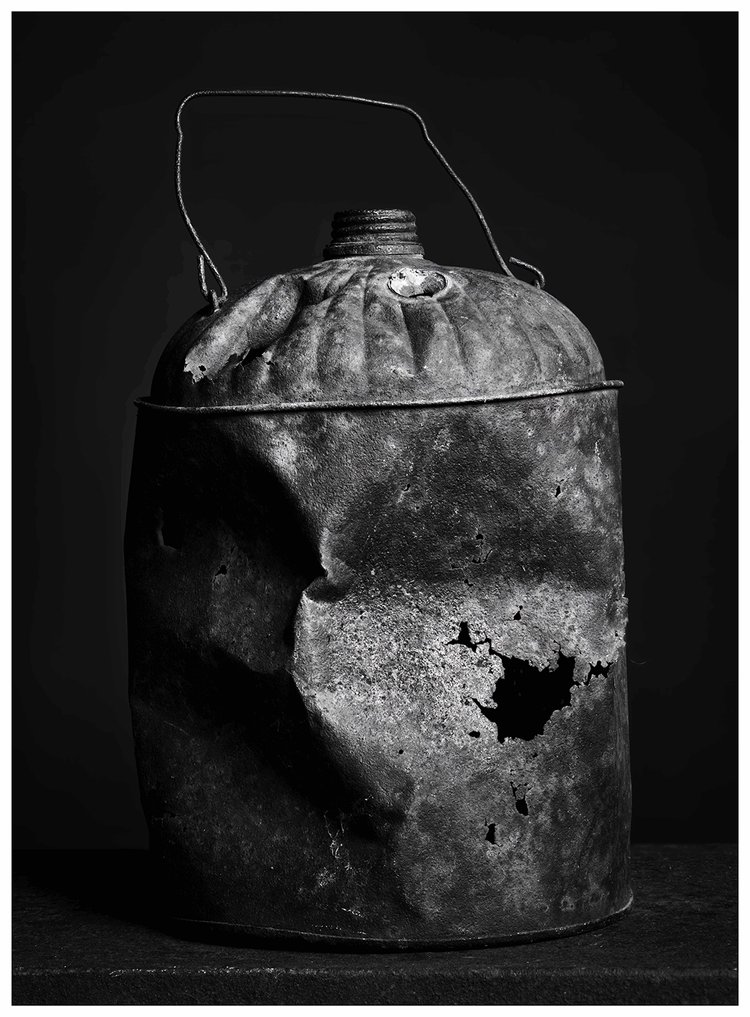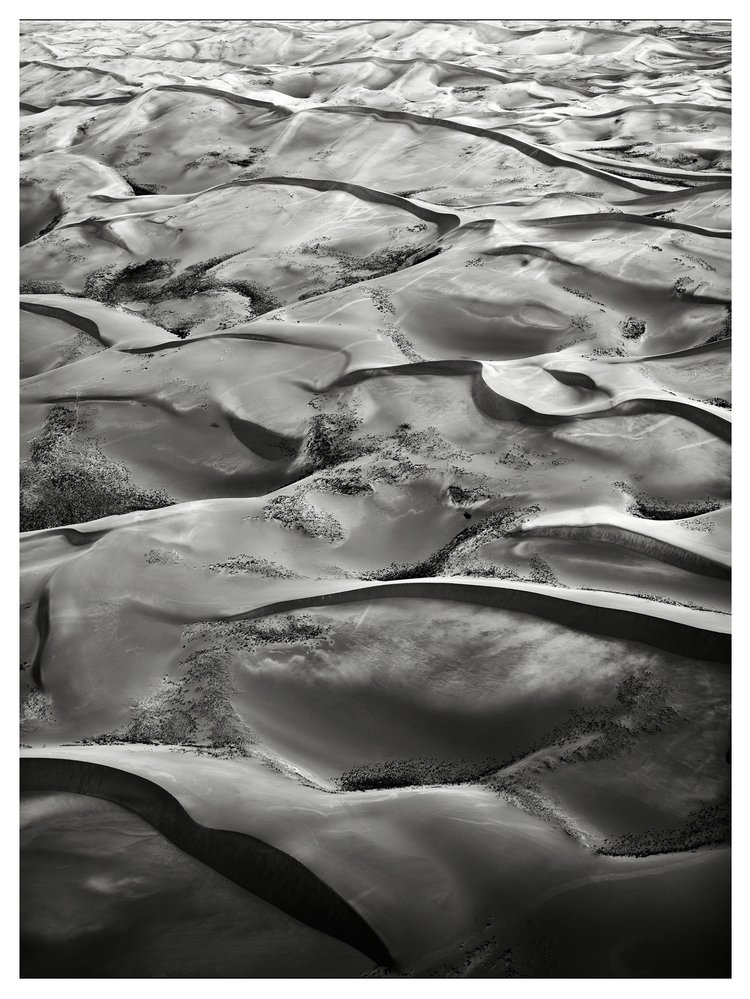Photographer Spotlight : Jeff Puckett

How did you get started in photography & subsequently photogravure?
I was introduced to photography at twelve years old. A neighborhood buddy had a dark room in his basement and a 35mm Pentax. He taught me how to use the camera (apperture, shutter speed, depth of field, film speed, etc). He also taught me how to develop the black-and-white film we were shooting and print the negatives using his old Durst enlarger. Fondly I don’t think the smell of the stop bath will ever leave my nose. I’ve shot some color over the years, but have always gone right back to black and white.
I became interested in Platinum/Palladium printing prior to Photogravure. I did a one-on-one P/P workshop with a great printer and teacher, Don Messec, in Santa Fe. He also is a true master of Photogravure. After learning the basics of Platinum/Palladium, I journeyed out to Topsham, VT to pick up a UV light box from Jon Cone at Cone Editions. I’d planned to complete another week of Platinum work there when I spotted his printing press. I asked him what it was for, and Jon said, “Oh, that’s my happy place,” Well, I thought happy sounds good to me. So we spent the week working on Photogravure. I was smitten and purchased an American French press from Conrad Machine Co. After another week of working with Jon Cone, I was hooked.


How would you describe the Photogravure process?
The Photogravure process is a great combination of modern digital technology and printing techniques from the late 1800’s. Plus, the archival stability is said to be 400+ years.
I use Phase One cameras for the image capture. Then, using my Epson printer, I print a negative of the image onto a metal photopolymer plate. Next, the plate is exposed in a UV exposure box. Then it is “developed” with a water rinse, where the printer ink is cleared from the plate – no nasty chemicals. Afterward, it’s blotted dry, hit a bit with a blow drier, then placed into a heat box for 30 minutes. It’s then exposed to UV again. The plate is now fully developed, fully etched, and ready to ink by hand.
I use Charbonnel Etching Ink. This process is an art unto itself. The ink is rubbed into the plate, filling the various depths of the etched plate with ink. By using different wiping pressure, and techniques, I’m able to accomplish some “dodging and burning” – like in the old darkroom. The inked plate and paper (that’s been soaked in water and blotted dry) are aligned on the press bed, covered with three, thin felt blankets, and pulled through the press using the large “captains wheel.”
The actual moment I pull that print off the plate is the best moment of all! The newly pulled print is then placed between blotting paper and into a drying press. After a few days of drying…Ta Da!


What made you choose your current Phase One system?
I had a bit of time on my hands during the pandemic. I had just sold a business and was interested in spending more time on my photography addiction. With a few billion photographers out there taking photos with smartphones, I wanted to do work that was different and set apart from the norm. Equipment-wise, I have used 35 mm, medium format Hasselblad, and 4×5 view cameras. I knew I wanted a camera that created big files (8”x10” negative type files), with great resolution and dynamic range. I dug in and researched the options for months. I read everything I could on the internet, countless Phase One blogs. I spoke to photographers who were making images I thought were special and those knowledgeable on these systems like Murray over at CI. The Phase One system kept rising to the top.

What has your experience been using your Phase One system to produce photogravure prints?
Traditional Photogravure of the past were a bit softer than the prints with which I end up. I’m sure that some of that has to do with the photopolymer plates I use, versus using copper etched plates. My prints are very sharp and incredibly detailed. There is a certain richness and depth that is produced in a gravure. I think this is mainly the result of the files from which I’m printing. There is zero doubt that the incredible resolution that comes out of the 151 megapixel sensor of the Phase One IQ4 back is a huge contributor. Combine that with the top-of-the-heap Rodenstock and Schneider lenses, and you end up with prints with so much depth that you feel like you can reach into them. Another addition to the Phase One secret sauce that I’m using, is the IQ4 150 Achromatic digital back. By removing the Bayer color filter and the infrared cut filter above the sensor, Phase One has expanded the resolution and dynamic range that can be achieved. I also like that it restricts me to just B&W. If I want to shoot color, I would just switch over to the color IQ4. But I don’t, so I won’t.
I have also found that certain subjects I photograph lend themselves better to either the Phase One XF or the XT. I love to use the XF with still life situations and portraiture. My favorite feature of the XF is its ability to easily focus stack images. I simply pick the near-focus and far-focus points, and the camera does the rest of the work. Those files are easily combined in Helicon Focus software and processed. From there I process the image in Capture One and a bit of Photoshop tweaking.
The XT is the absolute perfect field camera for any landscape and architectural photography. My favorite and often-used features on the XT are Dual Exposure Plus and Frame Averaging. The ease of creating crazy good, long exposures with Frame Averaging and the focus stacking feature were reasons enough for me to go with Phase One. Add on the IQ4 and Schneider and Rodenstock lenses and feel like I have the perfect system for me. Although pricey, Phase One provides me with all updates as they are developed. I feel like I get a new camera with new capabilities, without having to take my wallet out again. That’s comforting.

Tell us about your studio & gallery space, and your experience owning and managing it.
I bought a Studio/Gallery that’s located in the lower downtown district of Denver, Colorado two years ago. It was an existing space that was built 25 years ago in a building built in the late 1800s. It was built out as a gallery but never used as such until now. The main floor, street-level space is my gallery space. It is also where my America French Press is located. Pulling photogravure prints just inside the window has worked a bit like a people magnet. Folks walking by, often on their way to a Colorado Rockies Baseball game, seem drawn into the gallery when they get a glimpse of the large turning wheel of the press. Other than great light to view the newly pulled prints, the window and location of the press have worked out nicely.
The basement holds my Epson P9000 printer, my large UV exposure box, a wet room, and various work areas and tables. The printer is used to print my photopolymer plates for the gravure process and my large-scale Piezography carbon ink prints.
I have found that most of my sales occur around the open house events, or the private showing of my prints, as I don’t have normal open hours for the gallery. It may also have something to do with serving tequila in the gallery 🙂


3. What does your slogan “Finding beauty in the unexpected” mean to you?
I love fine art photography. Be it a unique landscape, portrait, or still life, I like it all. My favorite subjects however are those that a person would probably not even notice, and definitely not see as art. Whether it’s a rock on a fence post, a rusty old pitcher, a wilted flower, or a corn husker from the 1800’s, I think there can be something really special created. A particular image might not be the end-all for a particular collector, but for someone (like me), it might be a thing of beauty and be worth hanging on a wall as a reminder to always be on the lookout for beauty in the unexpected. These finds are part of the blessings of life. (That’s deep right there).


Want to see more of Jeff’s work?
Jeff’s System






